It’s no secret that many of the minor parts in Casablanca were played by refugees from the Nazis, but the sheer number of refugees in the movie, and the specific details of their stories, still have the power to amaze.
Here are the tales of the guy whose dad sprung him from a concentration camp, the guy who went from standing up to Hitler to standing up to Joseph McCarthy, the refugee couple who met and got married on Warner Brothers’ previous anti-Nazi film, and the Russian Jew who fled into Germany to get away from the Communists...
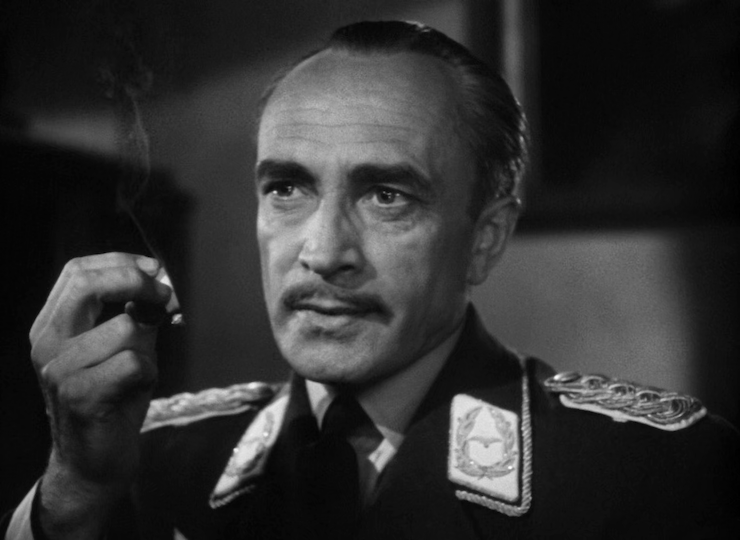
Conrad Veidt
Major Heinrich Strasser
A fervent anti-Nazi from Berlin, and a major star in Germany before the war. In March 1933, Joseph Goebbels started purging “undesirables” from the German film industry. Veidt married his Jewish Hungarian fiancee Ilona Prager the following month. He was told if he divorced his wife and declared support for the Nazis, he could continue working. So a week after his wedding, he and his wife fled to England. He became a British citizen, and gave generously in Britain to help the war effort. He left for America in 1941 with the expressed purpose of making films to persuade America to join the war — his contract stipulated that if he played a Nazi, he must be portrayed as a villain. Veidt died of a heart attack just months after the release of Casablanca.
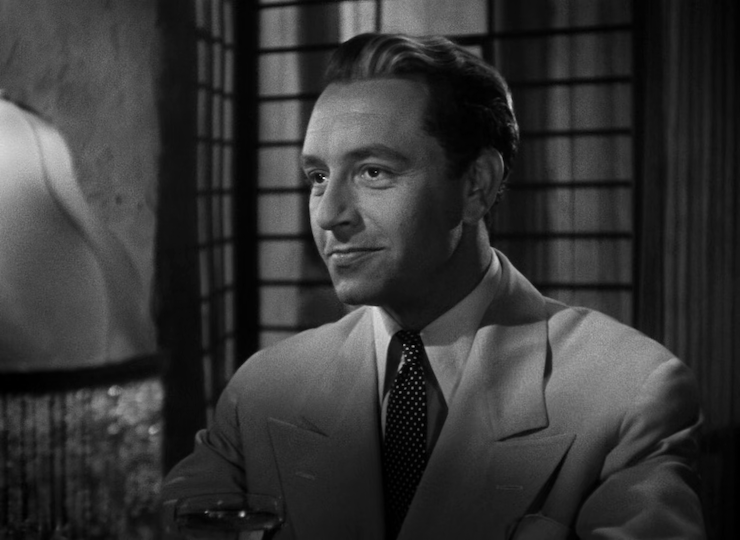
Paul Henreid
Victor Laszlo
Born in Trieste, then part of the Austro-Hungarian Empire. His father had converted from Judaism to Catholicism to avoid discrimination, but Henreid was rejected from working in German films anyway. Henreid's anti-Nazi actions included helping a Jewish comedian friend escape Germany. After Germany annexed Austria in 1938, he was formally designated an enemy of the Third Reich, and his assets were seized. He fled to England with nothing. He was in danger of deportation after England declared war on Germany, but Conrad Veidt among others vouched for him. He emigrated to the U.S. in 1940 and became an American citizen the following year. After the war he took a stand against McCarthyism, testifying against HUAC, and ended up on the Hollywood blacklist.
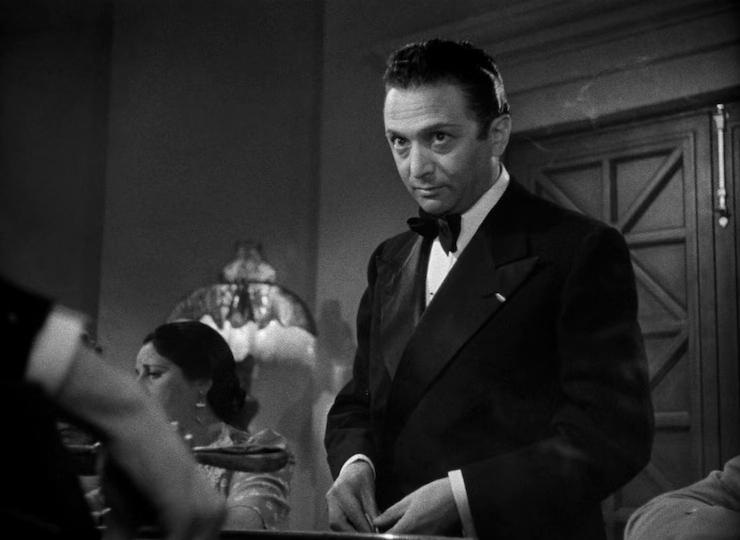
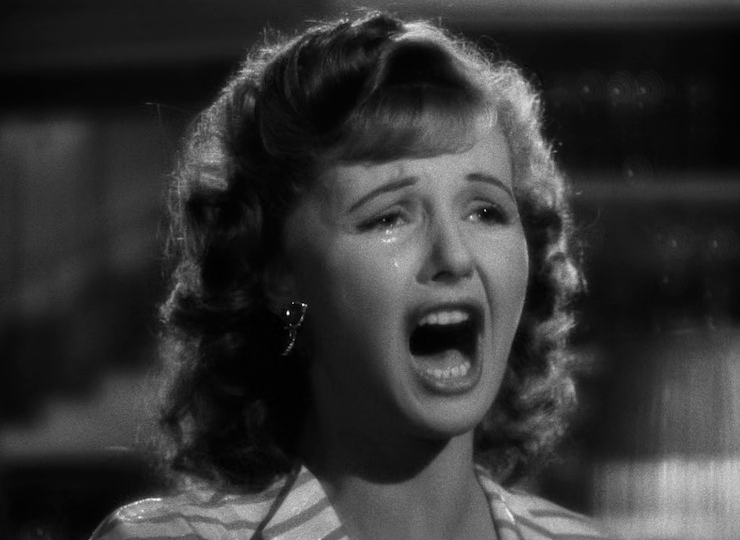
Marcel Dalio
Emil, the croupier
Madeline Lebeau
Yvonne, Rick’s discarded mistress
Dalio was born Israel Moshe Blauschild to Romanian Jewish immigrants in Paris. He was a very well-known actor before the war, appearing in The Rules Of The Game by Jean Renoir and other major films of the period. The Nazis used his face on anti-Jewish posters in France.
Dalio and Lebeau were married in 1939. Their journey reflects several parts of the movie. The couple fled from Paris to Lisbon in June 1940, just ahead of the German army. Two months later, they purchased visas to Chile and set sail, but were stranded in Mexico when their visas turned out to be forgeries. Lebeau spent the time in Mexico learning English. The couple entered the U.S. on temporary Canadian passports.
They divorced in 1942, and returned to Paris separately to continue their careers after the war. The rest of Dalio’s family perished in the camps.
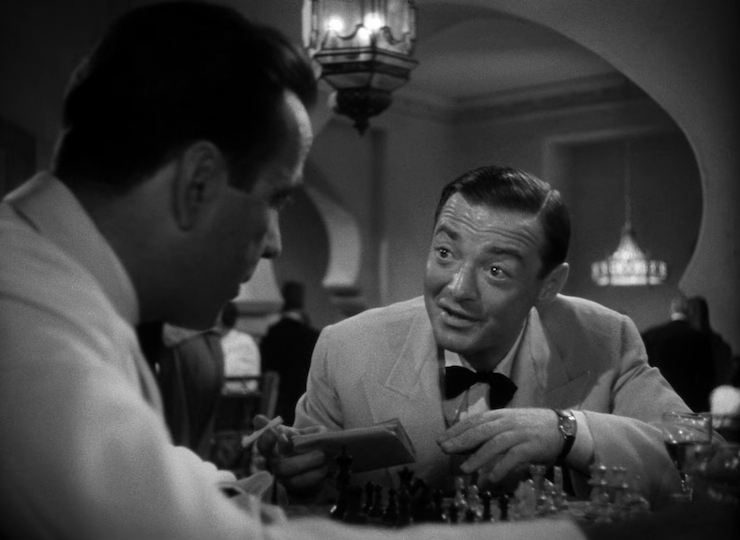
Peter Lorre
Ugarte, the petty thief
Born László Löwenstein in Rózsahegy, Hungary (now Ružomberok, Slovakia). He was working in Berlin when the Nazis came to power in 1933 and, since he was Jewish, he fled, first to Paris, then to London. He made one film for Alfred Hitchcock in Britain, learning much of his English dialogue phonetically. He sailed for the U.S. in 1934, and became an American citizen in 1941. He had a long and successful career in America after the war, and also made one film in West Germany in 1951, a commercial flop about German war crimes.
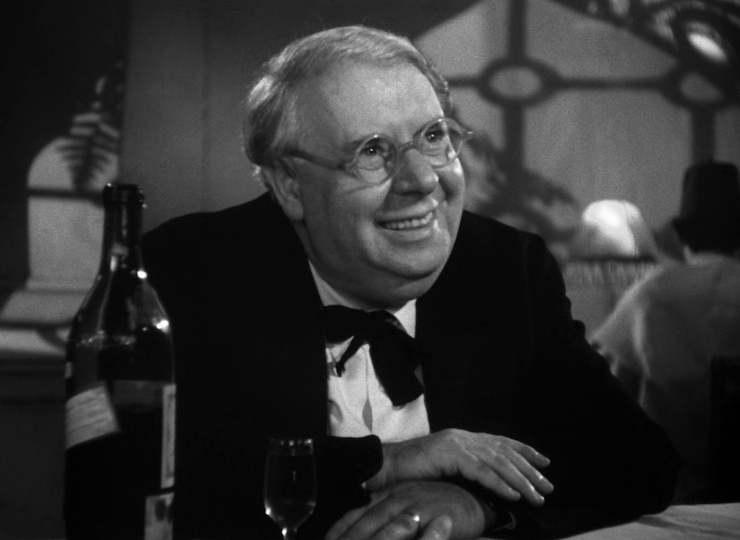
S.Z. Sakall
Carl, the head waiter
A Jewish native of Budapest, Hungary. Sources differ on his birth name, but became known professionally by his nickname Szőke Szakáll, “blonde beard”. He had been acting in Vienna, but was forced to return to Hungary in 1933 when the Nazis came to power. When Hungary also joined the Axis in 1940, he and his wife fled to Hollywood, where he had a long career. He became an American citizen in 1946. All 3 of his sisters died in the camps, as well as his wife’s brother and sister.
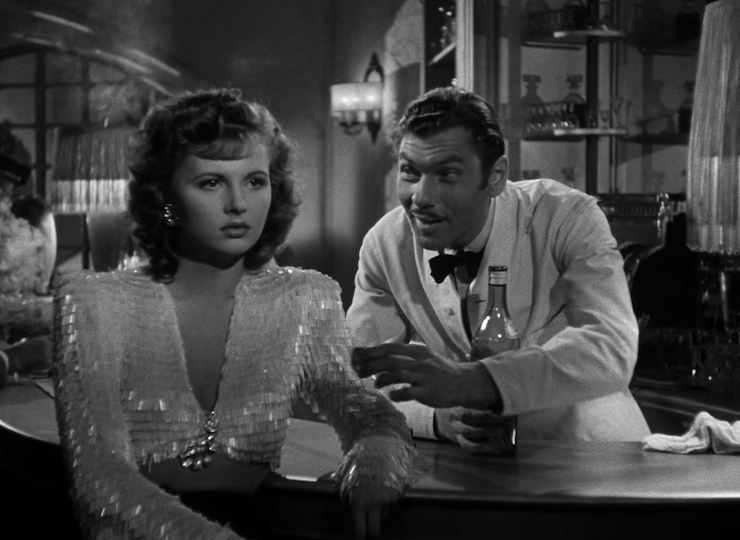
Leonid Kinskey
Sascha, the bartender
A native of St. Petersburg, Russia, where he started his career as a mime. His journey as a refugee started in 1921, fleeing the communist revolution in Russia. Ironically, as a Jew, he immigrated into Germany, though he had already left before the Nazis took power. He spent some time in Rio de Janeiro, and then moved to New York in 1924. He lived the rest of his life in America.
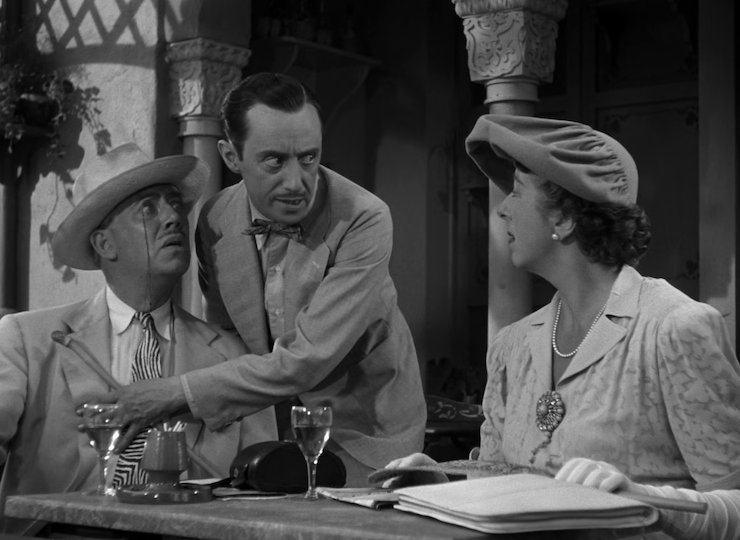
Curt Bois
the pickpocket
Born Kurt Boas to a Jewish family in Berlin. He fled to the U.S. in 1934 after the Nazis took power, arriving first on Broadway, and then moving to Hollywood in 1937. He returned to Germany in 1950, and continued his acting career there.
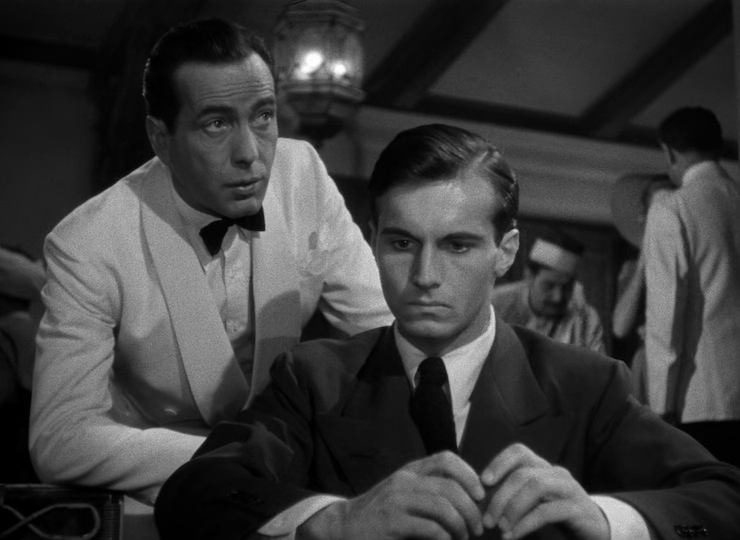
Helmut Dantine
Jan Brandel, the young husband
In Casablanca he plays a Bulgarian, but Dantine was actually Austrian. He was involved in Vienna’s anti-Nazi movement, and when the Nazis annexed Austria in 1938, he was rounded up and thrown into the Rosserlaende concentration camp for 3 months at age 19. His father was the head of the Austrian railway system; he used his influence to get Helmut released, then immediately sent him to California to live with a friend. Helmut started acting at UCLA, and became an American citizen in April 1944. He married the daughter of Nicholas Schenck, the president of Loew’s theaters, and had a successful career as a producer.
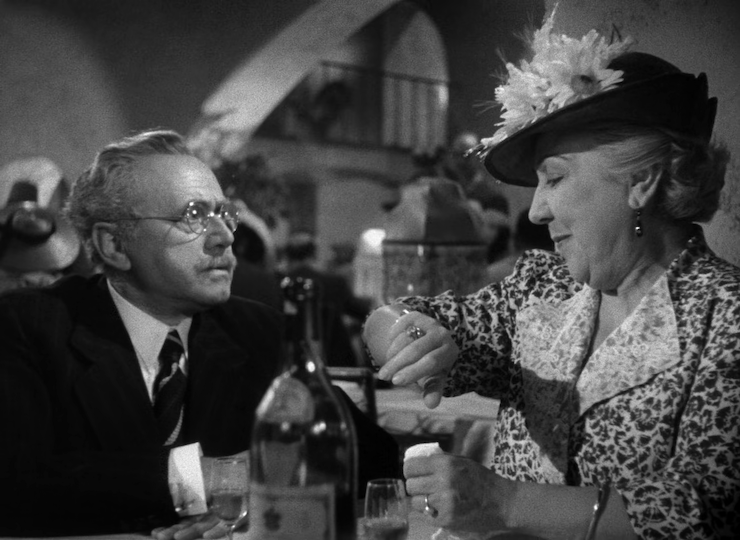
Ludwig Stössel & Ilka Grüning
Mr. and Mrs. Leuchtag, the old couple practicing English
Stössel was Jewish, born in Lockenhaus, Hungary (now part of Austria). He left Germany for Austria when the Nazis took power in 1933. After the Nazis annexed Austria in 1938, he was imprisoned multiple times before escaping Vienna with his wife to Paris, and then to London. He did a couple of films in England before coming to America in 1939. After Casablanca, he performed in several more anti-Nazi films, including They Came To Blow Up America and Hitler’s Madman.
Grüning was Jewish, born in Vienna, Austria. She was the head of a major acting school in Berlin. She fled Germany for Paris in 1938, and then sailed to New York in February 1939. She also worked on several move anti-Nazi films, appearing with Stössel again on The Strange Death of Adolf Hitler and Underground . After the war, she tried returning to Germany, but came back to America after just a couple of years.
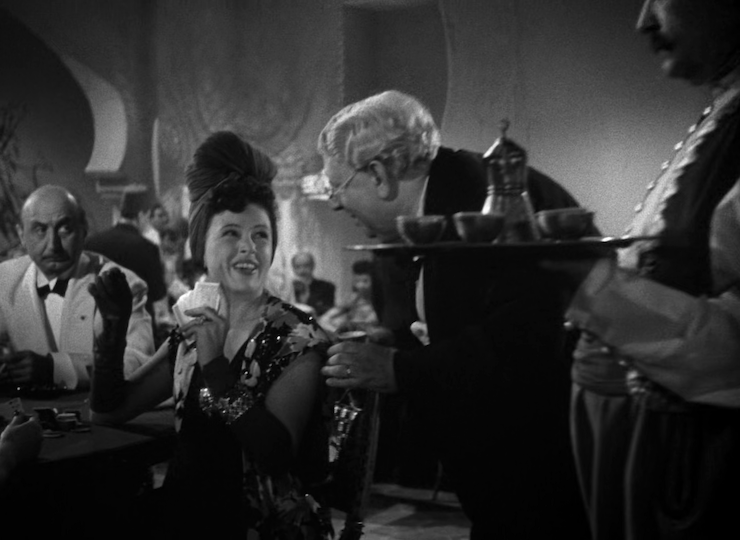
Trude Berliner
“Will you ask Rick if he will have a drink with us?”
Gertrude Berliner was born to a Jewish family in Berlin, where she became a famous cabaret performer in the 1920s. After a few small roles, her film work took off in 1928, and she appeared in dozens of films in the next 5 years (including four with S. Z. Sakall) but her career was cut short in 1933 when the Nazis took power. She fled Germany and settled in the Netherlands, where she married the Swiss painter Max Schoop in 1939, but was forced to flee again when the Nazis occupied the Netherlands in 1940. The couple came to America via Lisbon, just like in the movie. She tried to resume her career in Hollywood, but only got a handful of bit parts, and ended up giving up acting altogether.
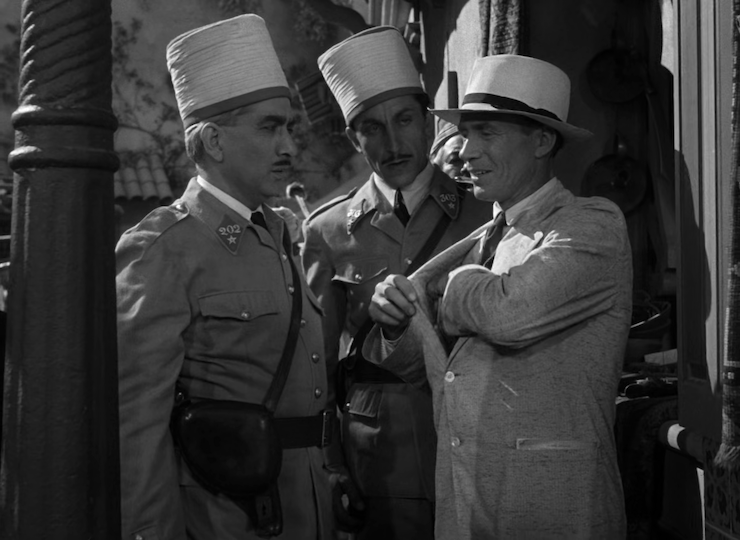
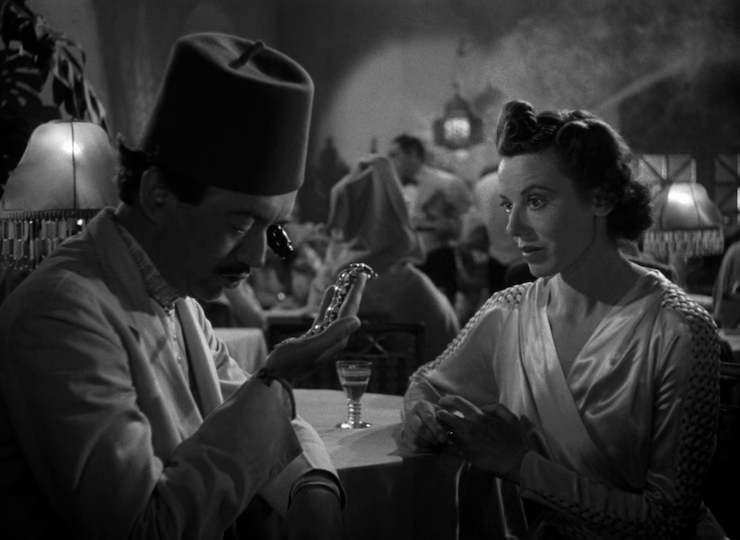
Wolfgang Zilzer
the man with expired papers
Lotte Palfi Andor
the woman selling her diamonds
Zilzer’s father was a Jewish actor from Germany. He was working in America in 1901, and so Wolfgang was born in Cincinnati, Ohio. They returned to Germany after the death of Zilzer’s mother when Wolfgang was only 4. After Hitler’s rise to power, he fled to France, then returned to Germany in 1935, before leaving for the U.S. in 1937. Upon arriving, he was surprised to discover he already had U.S. citizenship. He appeared in several anti-Nazi films in America under the pseudonym John Voight, to protect his father back in Berlin. However the Gestapo interrogated his father in 1943, showing him a picture of his son from Confessions Of A Nazi Spy, and his father died shortly afterwards under mysterious circumstances.
Andor was also Jewish, born Lotte Mosbacher in Bochum, Germany. She married film editor Viktor Palfi, and the couple fled to the U.S. via France and Spain in 1934, after the Nazis came to power. They could not find work and separated. Her mother died in 1942 in the Litzmannstadt ghetto.
The pair met and fell in love on the set of Confessions Of A Nazi Spy in 1939. Both had long careers after the war. Mosbacher only worked in America, but Zilzer performed in both America and Germany. When Zilzer fell ill in the late 1980s, he decided to return to Germany; Andor refused to join him, and the couple divorced. Both died soon after.
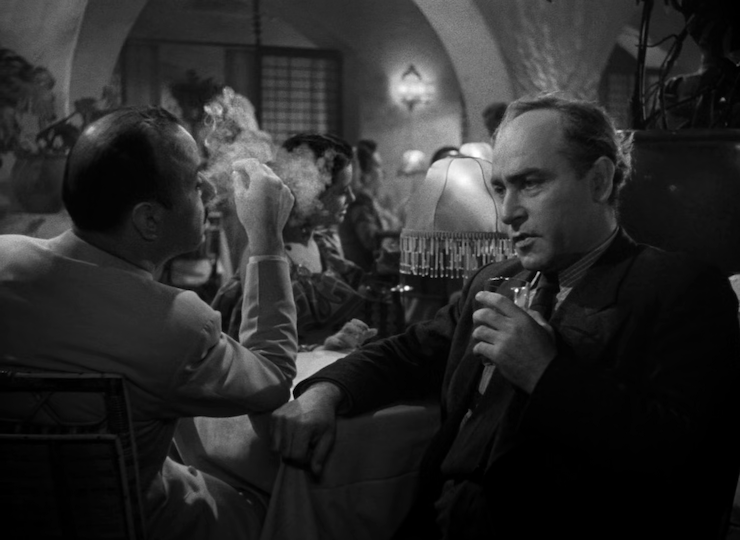
Louis V. Arco
“Waiting, waiting, waiting....I’ll never get out of here....I’ll die in Casablanca.”
Born Lutz Altschul to a Jewish family in Austria. He had been working in Germany, but returned home to Austria when the Nazis came to power in 1933. He fled again when the Nazis annexed Austria in 1938, emigrating to America via Switzerland and France. He had bit parts in over a dozen anti-Nazi films in Hollywood during the war. He became an American citizen in 1944, but returned to Germany after the war.
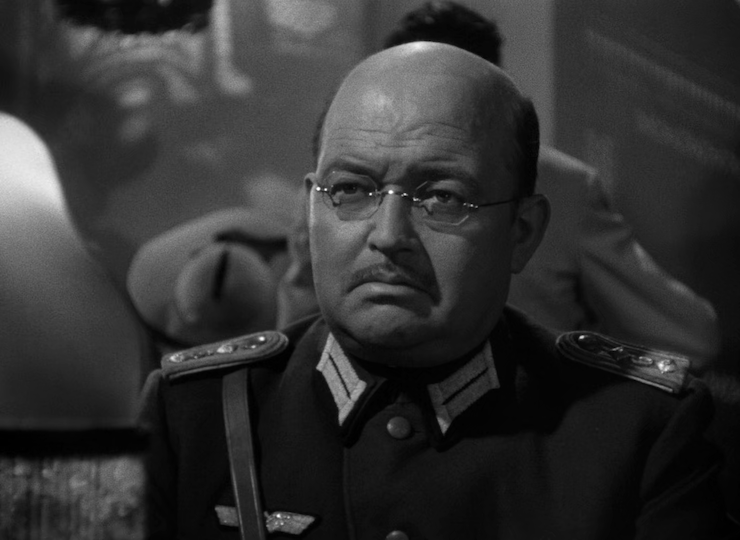
Richard Ryen
Colonel Heinze, aide to Major Strasser
Born Richard Revy in Főherczeglak, Hungary (now Kneževo, Croatia). He was working in Germany when he was expelled by the Nazis in 1934. He first went to Switzerland, then came to Hollywood in October 1938. When film roles for Germans dried up after the war, he became a writer, and lived the rest of his life in America.
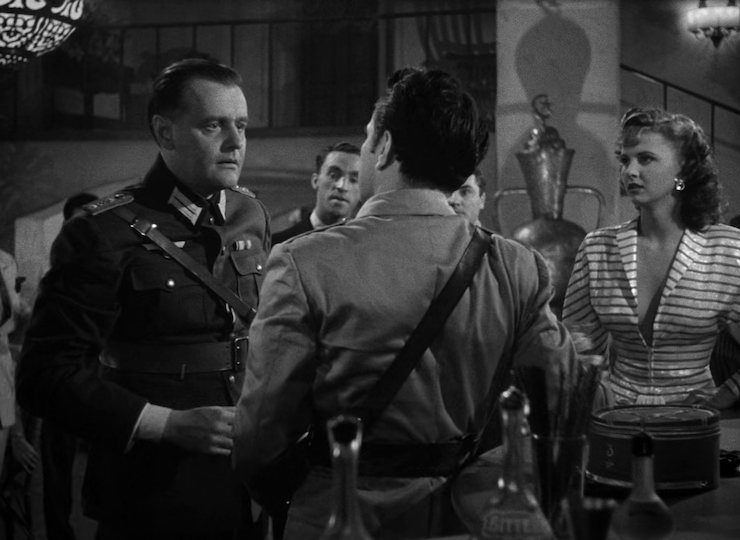
Hans Heinrich von Twardowski
the German officer who courts Yvonne and starts a fight
Twardowski was a homosexual, born in Stettin, Germany (now Szczecin, Poland). He left Germany around 1930 as the Nazis were on the rise. His film career stalled after the war, but he continued working in theater in America.
Director Michael Curtiz and composer Max Steiner were both Jewish immigrants, but not really refugees. Steiner was Austrian, and Curtiz was Hungarian. Both came to America before the war, Curtiz in 1926, Steiner in 1929.
All photos © Warner Brothers